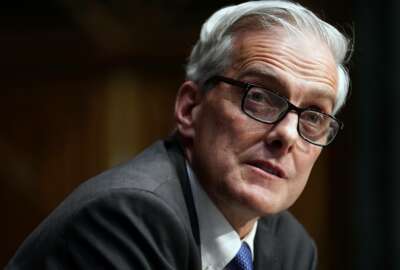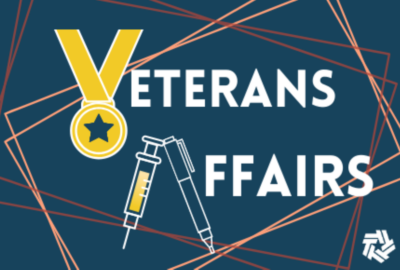House lawmakers call on VA to step up efforts to help vets transition to civilian life
VA officials say they’re staffing up and finding new ways to reach out to new veterans and enroll them in the benefits they’re eligible to receive.
The Biden administration is calling on the Defense Department and the Department of Veterans Affairs to improve the experience of active-duty service members transitioning back to civilian life — whether it means going back to school or finding a job.
VA officials say they’re staffing up and finding new ways to reach out to new veterans and enroll them in the benefits they’re eligible to receive.
But members of the House VA Committee’s economic opportunity subcommittee say the department needs to do more outreach to veterans with service-related disabilities, to ensure they have the support they need to rejoin the workforce or continue their education.
Nick Pamperin, VBA’s executive director of readiness and employment, told lawmakers at an Aug. 23 hearing that the department is seeing “record growth” within Veteran Readiness and Employment (VR&E) that “we’ve never seen historically before.”
VA’s Veteran Readiness and Employment (VR&E) program offers services to veterans with a disability that was caused, or made worse, by their active-duty service and limits their ability to work
The VA has about 160,000 veterans enrolled in VR&E — up from 117,000 to 120,000 enrollees about two years ago.
Pamperin said the department is seeing a 45% increase in applications and a 38% increase in active participants in the VR&E program.
“As part of outreach, as part of the PACT Act, part of all of the efforts that we’ve made, we’ve seen tremendous growth,” he said.
Lawmakers, however, say more outreach is needed, and that hundreds of thousands of veterans could be eligible for the VR&E program.
“You can’t tell me how much money you need for X amount of staff persons, if you don’t know how many staff persons you need, because you don’t know how many veterans need to be serviced,” Subcommittee Chairman Derrick Van Orden (R-Wis.) said.
“Until you have an actual survey, until you have a census of the amount of veterans that are currently enrolled, the amount of veterans that can potentially be enrolled, you cannot reasonably ask us for the appropriate of money, which it’s our job to write the budget, to give you the money if you don’t have the data points required,” he added.
A study last year from the Government Accountability Office found more than 4,300 at-risk service members didn’t receive the assistance they needed when going through the Transition Assistance Program (TAP) meant to prepare them for the shift from active-duty military status to civilian life.
“The current TAP program, while well-intentioned, is not fully meeting the needs of today’s service members and their families,” Van Orden said. “Too many of them are falling through the cracks. We must do a better job of ensuring that they have a concrete plan for life after the service.”
Lawmakers lead bills to improve transition
Van Orden said the TAP program can be a make-or-break moment for how successfully service members transition from active-duty military back to civilian life.
The Biden administration made this transition back to civilian life one of five priority “life experiences” that require a multi-agency approach to improve.
The 24 months following active-duty military service is when veterans are most likely to die by suicide.
“That is because, in the blink of an eye, they lose their rank, uniform, social status, authority, and anywhere from half to their entire paycheck.”
Van Orden introduced the TAP Promotion Act at the start of this year. The bill would Veterans Service Organizations (VSOs) to provide information to service members going through the TAP program.
“No two service members have had the same life experiences or career in the military and we should do all we can to help personalize the transition experience that we provide to them to meet their needs,” he said.
Subcommittee Ranking Member Mike Levin (D-Calif) is leading the Transition Improvement by Estimating Risk (TIER) Act. The bill would add new screening criteria to better understand the risk factors each transitioning service member faces. The bill passed the House, as part of the National Defense Authorization Act.
“There is no one size fits all for transitioning service members, it simply doesn’t work. We have to individually tailor TAP for each service member’s needs as best we can,” Levin said. “They throw so much at our transitioning service members all at once, in so many acronyms, so many programs expect everybody to know everything after, you know, basically feeding it all to them, like cramming for an exam.”
Duane Honeycutt, the executive director of VA’s regional office in Milwaukee, said vocational rehabilitation counselors in the area have “achieved a positive outcome” for 166 veterans, so far this fiscal year, and that 141 of them are now employed.
However, Honeycutt said only about 25 of them have reached “maximum rehabilitation gain, which means the veteran participant has reached full employability potential based on the limitations of their disabilities.”
VA calling new veterans through Solid Start
VA, under its Solid Start program, is calling every newly separated service member three times during their first year of separation. The department launched the program in December 2019.
Melissa Cohen, the Veterans Benefits Administration’s executive director for outreach for transition and economic development, said the Solid Start program currently has about a 70% success rate of connecting with veterans.
“We’re finding that when veterans can schedule that call in advance, they’re answering that call on the first instead of the third call,” Cohen said.
The calls are meant to connect veterans with VA programs they qualify for — such as home loans, health care, mental health support, and employment programs.
“We stand ready to answer VR&E-related questions and to have access to what services they have accessed or not,” Cohen said.
Cohen said VBA is rolling out a new initiative where transitioning service members can scan a QR code during their TAP course and make an appointment with a VA benefit advisor on the spot.
“When veterans can schedule that call in advance, they’re answering that call on the first instead of the third call, and the length of the conversation, we’re finding, is twice as long. So we continue to work every avenue we can to make sure we have that direct connect,” Cohen said.
The VA is also collaborating with the Labor Department for its off-base transition training.
VA efforts to support veterans on campus
The VA, through its VetSuccess on Campus (VSOC) program, sends VSOC VA Vocational Rehabilitation Counselor to more than 100 colleges and universities.
The counselors help veteran students receive the support and assistance they need to adjust to college life, meet their educational and employment goals, and assist with disability accommodations.
Pamperin said the VA is required by law to have one counselor at a school per 125 veterans. The VA, he added, made more than 340 full-time hires this year to maintain that ratio.
“The VSOC counselors on campus provide an immense benefit to veterans and to military dependents and spouses on that campus, but 76% of the work that they do is not VR&E related,” Pamperin said.
Despite increased hiring, Pamperin said the VA has a waitlist of over 300 universities that have requested VSOC counselors.
“We need to make sure that we’re funded for the staffing levels so that we have counselors to be able to serve veterans,” he said.
“We’ve unfortunately been constrained by who were allowed to hire for a VSOC. Right now, due to our record growth, our first priority is to ensure that veterans are seen by a counselor,” he said.
The VA is also required, by statute, to only hire VSOC counselors who have a master’s degree in one of five fields. Pamperin said that “makes it incredibly difficult to recruit.”
“It is my opinion that they those restrictions should be removed so that they can provide the general benefits VA assistance opens up the door for us to hire a whole different cadre than a small group of counselors,” he said.
Copyright © 2025 Federal News Network. All rights reserved. This website is not intended for users located within the European Economic Area.
Jory Heckman is a reporter at Federal News Network covering U.S. Postal Service, IRS, big data and technology issues.
Follow @jheckmanWFED






